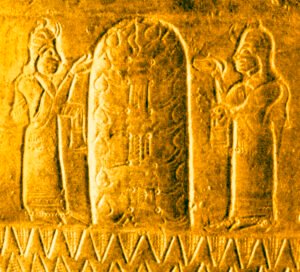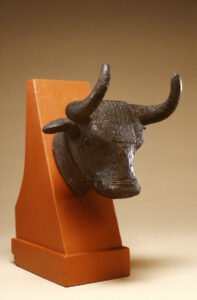The Ancient Urartu Civilization: Insights into a Forgotten Anatolian Kingdom
The Ancient Urartu civilization, also known as the Kingdom of Van, flourished in the region of Anatolia from the 9th to the 6th century BCE. Despite being overshadowed by its more famous counterparts such as Egypt, Mesopotamia, and Greece, Urartu left an indelible mark on history. This article will provide a comprehensive overview of this often overlooked civilization, shedding light on its geographical and historical context, architecture, social structure, religion, art, economic system, military power, and ultimately, its decline. Additionally, we will delve into the fascinating rediscovery of Urartu, archaeological findings, deciphering of its language and writing, and its enduring legacy.

Geographical and Historical Context of Urartu
Situated in modern-day Eastern Turkey, Western Armenia, and northwestern Iran, the Urartian Kingdom was nestled between the Tigris and Euphrates rivers, encompassing a mountainous terrain. The region’s strategic location allowed Urartu to control important trade routes between Asia and the Mediterranean. Ancient sources, such as Assyrian inscriptions, provide valuable historical context, revealing conflicts and alliances between Urartu and neighboring empires, such as Assyria and Phrygia.
Architecture and Urban Planning in Urartu
Urartian architecture showcases an impressive blend of local and Assyrian influences. The kingdom’s capital, Tushpa (modern-day Van), was adorned with monumental structures, including temples, palaces, and fortresses. The most renowned example is the Van Fortress, a massive fortified complex overlooking Lake Van. Urban planning in Urartu was characterized by well-organized cities with a central citadel and a grid-like street network, displaying the kingdom’s advanced engineering skills.
Social Structure and Governance of the Urartians
The Urartian society was structured hierarchically, with a ruling class comprising the king, nobles, and high-ranking priests. The majority of the population consisted of farmers, artisans, and laborers. The king, considered a divine figure, had absolute power and was responsible for the administration, justice, and military affairs. The existence of a standardized system of laws, as evidenced by the Code of Urartu, illustrates a sophisticated governance structure.
Religion and Beliefs in the Urartu Kingdom
Religion played a crucial role in the daily lives of Urartians. They worshipped a pantheon of gods and goddesses, with Haldi, the god of war and weather, being the most prominent. Temples dedicated to the deities were constructed throughout the kingdom, often adorned with intricate carvings and reliefs. Sacrifices and rituals were performed by priests, who held considerable influence in society.

Art and Craftsmanship in Urartu
Urartian artisans excelled in various artistic mediums, including sculpture, metalwork, and pottery. Their artwork often depicted mythological creatures, legendary heroes, and scenes from daily life. Bronze objects, such as ceremonial cauldrons and weapons, stand as testament to the exceptional craftsmanship of Urartian artisans. The intricate detail and skill displayed in their creations demonstrate a sophisticated artistic tradition.
Economic System and Trade in Urartu
The economy of Urartu was primarily agrarian, with agriculture serving as the backbone of the kingdom. The fertile valleys and irrigation systems enabled the cultivation of crops such as barley, wheat, and grapes. Trade also played a significant role, with Urartu being a hub for the exchange of goods between Mesopotamia and the Caucasus. The kingdom possessed valuable natural resources, including metals, which further enhanced its economic power.
Military Power and Warfare Strategies of Urartu
Urartu boasted a formidable military force, which allowed it to expand and defend its territory. The kingdom’s army consisted of both infantry and cavalry, equipped with advanced weaponry such as iron-tipped spears and chariots. Urartian fortresses, strategically positioned on hilltops, served as defensive strongholds. The Urartians employed a combination of siege warfare, guerrilla tactics, and diplomacy to maintain their supremacy in the region.
The Fall of Urartu: Causes and Consequences
The decline of Urartu remains enigmatic, with various factors contributing to its downfall. External pressures from neighboring powers, internal unrest, and ecological challenges, including earthquakes and droughts, weakened the kingdom. The final blow came in the 6th century BCE when Urartu was overrun by the Medes and subsequently absorbed into the Achaemenid Empire. The fall of Urartu marked the end of an era, but its legacy would endure.
Rediscovery and Archaeological Findings of Urartu
Urartu remained largely forgotten until the late 19th century when the region was explored by European archaeologists. Excavations in Tushpa and surrounding areas unveiled the grandeur of Urartian civilization, showcasing its architectural marvels, artifacts, and inscriptions. These findings provided vital insights into the culture, history, and societal structure of Urartu, placing it back onto the historical map.
Unraveling the Language and Writing of Urartu
Deciphering the language and writing system of Urartu has been a significant challenge. The cuneiform script used by Urartians bears similarities to Assyrian and Hittite scripts but remains largely undeciphered. Recent progress in understanding the language has shed light on royal inscriptions and administrative documents, unveiling glimpses of Urartian literature and culture.
Legacy and Influence of the Urartu Civilization
Despite its relatively short-lived existence, the Urartu civilization left a lasting impact on the region. Its architectural innovations, such as fortress design and urban planning, influenced subsequent civilizations. The Assyrians, Scythians, and later Armenian kingdoms were heavily influenced by Urartian culture, adopting elements of their art, religion, and governance. The legacy of Urartu serves as a reminder of the cultural richness and significance of Anatolia in the ancient world.
The Urartu civilization, once shrouded in obscurity, has risen from the depths of history to reclaim its rightful place among the great ancient civilizations. Its remarkable achievements in architecture, art, governance, and military power have left an indelible mark on Anatolia and the wider region. Thanks to ongoing archaeological discoveries and the painstaking efforts of linguists and historians, we continue to unravel the mysteries of Urartu, deepening our understanding of its people and their enduring legacy.